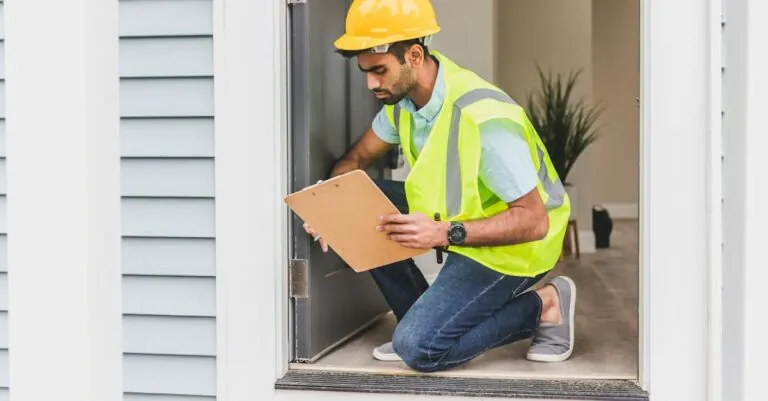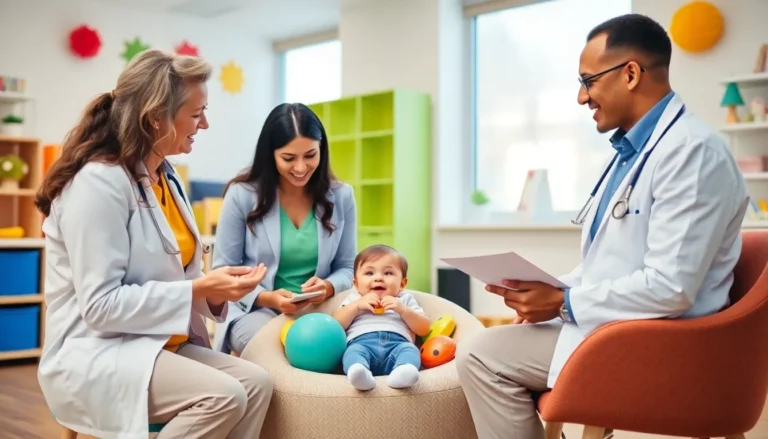Special needs classrooms transform traditional learning spaces into nurturing environments where every student can thrive. These specialized settings provide essential support tools safety measures and customized learning approaches designed to meet diverse educational requirements. Teachers work tirelessly to create inclusive atmospheres that celebrate each student’s unique abilities and learning styles.
Behind the colorful walls and adaptive equipment lies a world where education meets innovation. From state-of-the-art assistive technologies to specialized teaching methods these classrooms break down barriers and open doors to endless possibilities. Students with different abilities find their voice develop confidence and build essential life skills in these carefully crafted learning spaces.
Table of Contents
ToggleWhat Is a Special Needs Classroom?
A special needs classroom provides tailored educational environments for students with diverse learning requirements physical limitations cognitive challenges. These specialized spaces incorporate specific modifications accommodations to support each student’s individual educational goals.
Types of Special Education Settings
Special education settings include self-contained classrooms resource rooms inclusive general education spaces. Self-contained classrooms serve students who require intensive support throughout the school day with a specialized teacher student ratio of 1:8. Resource rooms function as supplementary learning spaces where students receive targeted instruction in specific subjects for 20-60 minutes daily. Inclusive settings integrate special needs students into general education classrooms with additional support from special education teachers paraprofessionals.
Key Features and Equipment
Special needs classrooms contain essential adaptive equipment sensory tools learning materials:
- Assistive Technology
- Speech-to-text software
- Touch screen devices
- Adaptive keyboards
- Sensory Equipment
- Weighted blankets
- Noise-canceling headphones
- Therapy balls
- Visual Supports
- Picture schedules
- Communication boards
- Visual timers
- Mobility Equipment
- Wheelchair accessible desks
- Positioning devices
- Support rails
The classroom layout incorporates designated quiet areas learning stations therapeutic spaces. Adjustable lighting temperature controls create comfortable environments for students with sensory sensitivities. Storage solutions keep specialized materials organized accessible while maintaining clear pathways for safe movement.
Creating an Inclusive Learning Environment
An inclusive learning environment supports diverse learning needs through thoughtful design and purposeful modifications. The physical space and sensory considerations work together to create optimal conditions for student success.
Physical Layout Considerations
The layout of an inclusive classroom maximizes accessibility through strategic furniture placement and clear pathways. Wide aisles accommodate mobility devices such as wheelchairs while flexible seating options include therapy balls, standing desks, and adjustable chairs. Learning stations feature varying heights to support different physical needs with sturdy surfaces at 24-30 inches for wheelchair access. Storage solutions keep materials organized at reachable heights between 36-44 inches. The room includes designated spaces for:
- Individual work areas with minimal distractions
- Small group collaboration zones with moveable furniture
- Calming corners with soft seating and privacy screens
- Technology stations with adapted hardware
- Open floor space for movement activities
Sensory-Friendly Modifications
Sensory modifications reduce environmental triggers and enhance focus through targeted adjustments. Sound-absorbing materials like acoustic panels dampen noise levels to 50-60 decibels. Lighting options include:
- Dimmable LED fixtures to control brightness
- Task lighting at workstations
- Natural light filters on windows
- Anti-glare screens on digital devices
- Color-coded organization systems
- Picture schedules and labels
- Neutral wall colors like sage green or light blue
- Minimal decorations to reduce visual overwhelm
Essential Teaching Strategies
Effective teaching strategies form the foundation of successful special needs education. These research-backed approaches maximize learning outcomes through personalized instruction methods specialized for each student’s unique requirements.
Differentiated Instruction Methods
Differentiated instruction adapts teaching methods to match individual student abilities. Teachers modify content presentation through multiple formats including visual aids, tactile materials, audio resources, hands-on activities. The curriculum incorporates varied skill levels with scaffolded assignments that break complex tasks into manageable steps. Learning stations enable students to rotate through different activities at their own pace while working on specific goals. Assessment options include oral presentations, written work, demonstrations or digital projects to accommodate diverse communication styles.
Behavior Management Techniques
Positive reinforcement leads behavior management in special needs classrooms through clear expectations paired with consistent rewards. Visual schedules help students transition between activities while reducing anxiety about daily routines. Token systems track progress toward behavioral goals using stickers, points or digital badges. Teachers implement individualized behavior intervention plans with specific triggers, replacement behaviors, and de-escalation strategies. Structured break times provide sensory regulation opportunities through movement activities, quiet corners or fidget tools. Clear communication methods include visual cues, social stories and role-playing to help students understand appropriate responses.
Support Staff and Resources
A special needs classroom relies on a dedicated team of professionals working collaboratively to support student success. The coordination between various specialists ensures comprehensive care for each student’s unique requirements.
Special Education Teachers
Special education teachers hold specialized certifications in areas like learning disabilities, autism spectrum disorders or emotional behavioral disorders. These educators create Individualized Education Programs (IEPs) tailored to each student’s goals abilities. They implement evidence based teaching strategies including multisensory instruction differentiated learning approaches structured literacy programs. Teachers maintain detailed progress records track behavioral data collaborate with families through regular communication channels. Their expertise extends to adapting curriculum materials modifying assessments providing accommodations that align with student needs.
Paraprofessionals and Specialists
Paraprofessionals provide direct support to students under teacher supervision implementing instructional programs assisting with daily activities. Speech language pathologists develop communication skills through targeted therapy sessions. Occupational therapists focus on fine motor skills self care abilities sensory integration. Physical therapists address gross motor development mobility concerns adaptive equipment needs. School psychologists conduct assessments monitor behavioral interventions support social emotional learning. Board certified behavior analysts design implement positive behavior support plans. Additional specialists include assistive technology experts vision specialists orientation mobility instructors deaf education teachers. These professionals coordinate services through regular team meetings data sharing sessions collaborative planning periods.
Technology and Assistive Devices
Modern technology transforms special needs classrooms into dynamic learning environments through specialized tools and adaptive equipment. Digital innovations enable students with diverse abilities to access educational content and communicate effectively.
Educational Software and Apps
Educational apps enhance learning through interactive platforms designed for varying abilities and learning styles. Text-to-speech applications convert written content into audio format for students with reading challenges. Communication apps featuring symbol-based systems help non-verbal students express thoughts and needs. Math visualization software breaks down complex concepts into manageable visual components. Learning management systems track individual progress and customize content delivery based on student performance. Screen readers and literacy tools support students with visual impairments or dyslexia in accessing digital content.
Adaptive Equipment
Specialized hardware accommodates physical and cognitive needs in the classroom environment. Alternative keyboards feature larger keys, color-coding and tactile surfaces for improved motor control. Adaptive mice include trackballs, joysticks and eye-tracking devices for students with limited mobility. Communication boards range from basic picture boards to sophisticated speech-generating devices. Positioning equipment includes adjustable desks, supportive seating and mounting systems for devices. Hearing assistance technology incorporates FM systems and sound field amplification for students with auditory processing challenges. Touch screens enable direct interaction with digital content through customizable interfaces.
Parent-Teacher Collaboration
Effective collaboration between parents and teachers creates a strong support system for students with special needs. Regular communication and coordinated efforts enhance student progress through consistent strategies across school and home environments.
Communication Methods
Parents and teachers maintain contact through multiple channels to share student progress and concerns. Daily communication logs track behavioral patterns, academic achievements, and emotional well-being. Digital platforms like ClassDojo or SeeSaw enable real-time updates with photos and videos of classroom activities. Monthly in-person conferences focus on IEP goals progress including data collection results. Teachers send weekly newsletters highlighting classroom activities, upcoming events, and specific strategies being implemented. Parent portals provide access to student assessments, attendance records, and specialized accommodation updates.
Supporting Learning at Home
Parents extend classroom learning by implementing similar routines and strategies in the home environment. Visual schedules mirror classroom formats to maintain consistency in daily activities. Parents use identical behavioral reinforcement systems as teachers to promote positive behaviors. Educational materials match classroom tools including specialized writing instruments, sensory items, and adaptive technology. Home learning spaces incorporate elements from classroom setups such as designated quiet areas and organized work stations. Families practice communication techniques used at school including sign language, picture cards, or assistive devices. Parents participate in training sessions to learn specific teaching methods and therapy exercises for home practice.
Conclusion
Special needs classrooms represent more than just physical spaces – they’re dynamic environments where every student can thrive and reach their full potential. Through thoughtful design adaptable teaching methods and collaborative support systems these specialized learning spaces create opportunities for success.
The combination of dedicated professionals modern technology and parent involvement builds a comprehensive support network that addresses each student’s unique requirements. By continuing to evolve and implement innovative solutions special needs classrooms will remain at the forefront of inclusive education ensuring every student has the tools and support they need to succeed.






